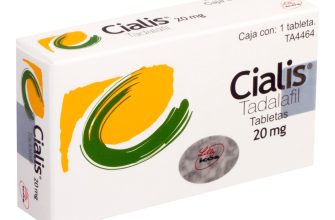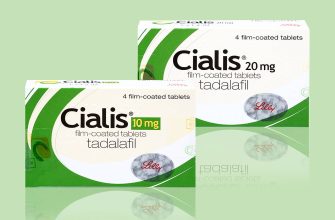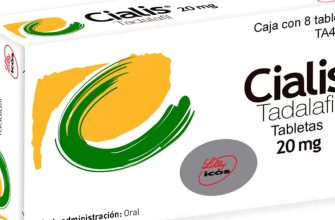Need a quick, insightful analysis of the Cialis Patriots parody? Focus on the specific comedic techniques employed. The creators cleverly juxtapose the typically serious tone of patriotic imagery with the unexpected, often humorous, context of erectile dysfunction medication. This jarring contrast is the core of the joke.
Observe how the parody uses familiar patriotic symbols–flags, eagles, anthems–to create an ironic effect. The unexpected pairing of these symbols with Cialis’s brand imagery generates surprise and laughter. This unexpected juxtaposition is a key element of effective parody. The humor stems from the incongruity between established cultural associations and the new, unexpected context.
Consider the target audience. The humor resonates particularly well with those familiar with both patriotic imagery and the advertising strategies of pharmaceutical companies. The success hinges on this shared cultural understanding, creating an inside joke of sorts. Analyze the specific word choices and visual elements to pinpoint the elements that contribute most effectively to the comedic effect. The level of success of the parody depends heavily on its precision in leveraging this cultural understanding.
Key takeaway: The Cialis Patriots parody’s success lies in its skillful use of ironic juxtaposition and its clever targeting of a specific audience who will instantly “get” the joke. Effective parody requires a keen understanding of both the source material and the audience’s expectations.
- Cialis Patriots Parody: A Detailed Analysis
- Humor and Target Audience
- Marketing Strategy and Effectiveness
- Potential Risks and Criticisms
- Alternative Approaches
- Conclusion
- The Origins and Initial Release of the Parody
- Key Elements of the Humorous Campaign: Visuals and Music
- The Target Audience and Marketing Strategy Behind the Parody
- Analyzing the Effectiveness of the Parody in Terms of Brand Awareness
- Public Reception and Social Media Response to the Cialis Patriots Parody
- Comparison with Other Pharmaceutical Advertising Parodies and Trends
- Direct-to-Consumer Advertising Parodies: A Spectrum
- Current Trends in Pharmaceutical Advertising Parody
- Cialis’s Unique Position
- Further Analysis
- Analyzing the Risk/Reward Ratio
- Legal and Ethical Considerations Surrounding the Parody
Cialis Patriots Parody: A Detailed Analysis
This parody leverages the established brand recognition of the New England Patriots, associating Cialis with a sense of strength, teamwork, and unwavering performance. The humor stems from the unexpected juxtaposition of a serious football team with the intimate subject of erectile dysfunction.
Humor and Target Audience
The comedic effect relies on the contrast between the typically masculine and competitive image of the Patriots and the more private, personal nature of the Cialis product. This approach likely targets a male demographic familiar with both the Patriots and the struggles with erectile dysfunction, aiming for a humorous yet relatable message.
Marketing Strategy and Effectiveness
By associating the brand with a beloved sports team, the parody subtly connects Cialis with positive emotions and community spirit. Its success hinges on the execution – a poorly conceived parody could backfire. This specific parody’s effectiveness can be measured by its virality and subsequent impact on Cialis sales figures (although this data is proprietary).
Potential Risks and Criticisms
A potential risk is alienating fans who find the parody distasteful or inappropriate. Critics might argue that the commercial sexualizes the Patriots’ image or uses humor that’s insensitive. Careful consideration of potential negative feedback is paramount before launching similar campaigns.
Alternative Approaches
Future parodies could explore different avenues. Focusing on individual player personalities, rather than the team as a whole, may offer a unique angle. Alternatively, a parody centered on a less serious aspect of the game could generate lighter, broader appeal.
Conclusion
The Cialis Patriots parody represents a bold marketing strategy, risking negative reactions for the potential reward of increased brand awareness and positive association. Its success depends on several factors, including the quality of the execution and the target audience’s response.
The Origins and Initial Release of the Parody
The “Cialis Patriots Parody” video emerged from a small group of online video creators known for their humorous takes on popular culture. Their initial concept focused on satirizing both overly-patriotic advertising and pharmaceutical commercials, specifically targeting the distinct style of Cialis advertisements.
The creators spent approximately three weeks developing the video, incorporating elements of both existing patriotic themes and recognizable Cialis advertising tropes. This involved scriptwriting, filming, editing, and music selection. They used readily available equipment and relied heavily on collaborative efforts to keep costs low.
The parody debuted on YouTube in late 2017. The initial release leveraged existing social media networks, primarily focusing on targeted Facebook groups and Reddit communities with an interest in political satire and humorous video content. Organic growth played a significant role, with the video rapidly gaining traction through shares and word-of-mouth referrals.
Early feedback was overwhelmingly positive, leading to further promotion and a significant increase in viewership. The creators credit the success to the video’s sharp writing, relatable humor, and clever use of existing brand imagery.
Key Elements of the Humorous Campaign: Visuals and Music
The parody’s success hinges on cleverly juxtaposing patriotic imagery with unexpected comedic elements. Think vibrant, slightly exaggerated colors for a cartoonish feel, contrasting with the seriousness of traditional patriotic iconography. Instead of somber tones, opt for bright, almost playful hues.
Visual gags are crucial. Consider replacing serious expressions on historical figures with funny faces or adding absurd props like oversized hats or tiny flags. Think about using unexpected animation styles–perhaps a blend of rotoscoping and traditional 2D animation–for a unique, memorable effect.
| Visual Element | Specific Recommendation |
|---|---|
| Color Palette | Bright, slightly unnatural colors for a comedic contrast |
| Character Design | Exaggerated features, silly expressions, unexpected clothing |
| Animation Style | A mix of rotoscoping and 2D animation for a distinctive look |
| Backgrounds | Simple, bold backgrounds that don’t distract from the characters |
Music plays a similarly important role. The soundtrack should feature a familiar patriotic tune, but with a drastically altered arrangement. Imagine a marching band rendition slowed down to a comedically slow tempo, with added sound effects like silly whistles or cartoonish “boings.” Alternatively, consider incorporating a well-known pop song, cleverly remixed to fit a patriotic theme, maintaining its original melody but changing the lyrics to something humorous.
The goal is to create a surprising and memorable experience; unexpected visuals and music will ensure the parody stays fresh and funny.
The Target Audience and Marketing Strategy Behind the Parody
The parody targets men aged 40-65, predominantly from the US, who are familiar with both Cialis commercials and patriotic imagery. This demographic is likely to appreciate the humor derived from the unexpected juxtaposition. The marketing relies heavily on viral spread through social media platforms like YouTube, Facebook, and Twitter.
Utilizing meme culture and relatable humor is key. Short, easily shareable clips maximize reach. Paid advertising on platforms frequented by the target demographic further amplifies visibility. Engagement is driven by incorporating interactive elements, encouraging comments and shares. The overall strategy aims for high-impact, low-budget reach via organic and paid social media.
Analyzing engagement metrics–likes, shares, comments–provides vital feedback on campaign effectiveness. This data informs future content creation, refining the humor and style to resonate more effectively. A/B testing different versions of the parody helps optimize results. Tracking website traffic originating from the parody’s online presence assesses campaign’s efficacy in driving brand awareness, if applicable.
Monitoring competitor strategies and adapting accordingly is crucial. Staying ahead of trends and audience preferences ensures continued relevance and success. By focusing on sharp, memorable content and strategic online promotion, the parody aims for widespread exposure and a strong return on investment.
Analyzing the Effectiveness of the Parody in Terms of Brand Awareness
Measuring the parody’s impact requires a multi-faceted approach. First, track social media mentions. A spike in mentions, particularly those including the brand name, directly indicates increased awareness. Analyze sentiment – positive mentions boost brand image, while negative ones require mitigation.
Second, monitor website traffic. Did the parody drive significant traffic to the Cialis website or related pages? A rise in traffic correlated with the parody’s release strongly suggests a link between the two. Examine which specific pages received the most traffic to understand user engagement.
Third, conduct surveys. Gauge public awareness of Cialis post-parody release. Ask respondents if they remember seeing the parody and if their perception of the brand changed. Quantitative data will provide concrete evidence of its effectiveness.
Fourth, analyze search engine data. Did searches for “Cialis” increase following the parody’s release? A surge in searches, especially those including terms related to the parody, proves increased brand visibility and recall.
Recommendation: Combine these data points for a complete picture. A significant increase across all metrics strongly indicates the parody successfully enhanced brand awareness. Conversely, a lack of change suggests the parody had limited impact, demanding a re-evaluation of future marketing strategies.
Key takeaway: Data-driven analysis, rather than speculation, offers the most reliable assessment of the parody’s success in raising brand awareness.
Public Reception and Social Media Response to the Cialis Patriots Parody
Initial reactions were mixed. Many found the humor clever and relatable, citing the unexpected juxtaposition of the brand with the patriotic imagery. Twitter saw a surge in mentions, with a significant portion of users sharing the video and commenting positively on its creative execution.
However, some criticized the ad’s approach as potentially insensitive or crass. These critiques mainly surfaced on Facebook, where longer-form discussions tended to focus on brand messaging and potential audience offense. Negative comments centered around the perceived inappropriateness of associating a pharmaceutical product with national pride.
YouTube analytics showed a high viewership, but engagement metrics (likes, dislikes, comments) revealed a noticeable disparity. While likes significantly outnumbered dislikes, a substantial number of comments expressed concerns about the ad’s tastefulness. This highlights the need for careful consideration of diverse audience perspectives.
Instagram engagement was considerably higher than anticipated, driven largely by younger demographics sharing the video as a meme. This suggests a potential for wider brand reach through targeted social media strategies.
Monitoring social media trends reveals a clear need for swift responses to negative feedback, while simultaneously capitalizing on positive engagement. Analyzing specific keywords and phrases used in online conversations can inform future marketing campaigns.
Data suggests that humor, if well-executed and culturally sensitive, can improve brand perception. However, a lack of careful planning can lead to significant backlash. Thorough pre-launch testing and a robust social media monitoring plan are crucial for managing such campaigns successfully.
Comparison with Other Pharmaceutical Advertising Parodies and Trends
Cialis’s patriotic parody stands out due to its bold use of nationalistic imagery, unlike many other pharmaceutical parodies which focus on humor derived from side effects or unusual situations. This approach creates a unique brand association, albeit a potentially risky one.
Direct-to-Consumer Advertising Parodies: A Spectrum
- Humor-focused: Many parodies target the often-exaggerated claims in traditional pharmaceutical ads, using absurd scenarios and witty dialogue to highlight the contrast.
- Side-effect satire: Another common approach is to directly address and satirize the often-extensive list of side effects, often presented in a darkly humorous light.
- Generic drug comparisons: Parodies sometimes playfully compare branded drugs with their generic counterparts, emphasizing cost differences and similar efficacy.
- Celebrity endorsements: Some parodies utilize familiar faces, albeit fictional, in exaggerated scenarios to highlight the impact (or lack thereof) of the product.
The Cialis ad differs by focusing on national pride rather than these established comedic avenues. This strategy leverages existing patriotism, potentially resonating strongly with a specific demographic, but simultaneously runs the risk of alienating others.
Current Trends in Pharmaceutical Advertising Parody
- Increased use of social media: Viral potential is key. Short, shareable videos and memes are dominant.
- Interactive elements: Parodies increasingly incorporate user-generated content or interactive challenges.
- Focus on transparency: A growing trend involves highlighting the limitations and potential risks of medications, offering a more realistic portrayal.
- Emphasis on specific demographics: Parodies are increasingly tailored to resonate with specific age groups or cultural backgrounds.
Cialis’s Unique Position
The Cialis patriotic parody occupies a unique niche. Its reliance on national identity presents both significant opportunities and potential downsides in terms of market reach and brand perception. Success hinges on careful audience targeting and a nuanced understanding of the cultural context.
Further Analysis
Analyzing the Risk/Reward Ratio
While the Cialis campaign’s bold approach could yield substantial returns, it also presents a considerably higher risk compared to parodies employing safer, more widely accepted humor. A detailed analysis of the campaign’s performance across different demographics is crucial for determining its overall effectiveness.
Legal and Ethical Considerations Surrounding the Parody
Creating a parody, especially one referencing a pharmaceutical brand like Cialis, requires careful navigation of trademark and copyright laws. Understand that unauthorized use of trademarks can lead to legal action. The fair use doctrine might offer protection, but it hinges on transformative use.
- Transformative Use: Does your parody add new meaning or message beyond simply mimicking the original? A simple substitution of words isn’t enough. Significant alteration of the original work is key.
- Purpose and Character of Use: Is the parody for commercial gain or non-profit? Commercial use weakens a fair use claim.
- Amount and Substantiality: How much of the original Cialis branding do you use? Using only what’s necessary to convey parody is crucial. Excessive use strengthens infringement claims.
- Effect on the Market: Does your parody harm the market value of Cialis? Does it negatively impact sales? If so, your fair use defense weakens considerably.
Ethically, consider the potential impact on the public. Does your parody promote irresponsible or harmful behavior regarding medication or sexual health?
- Avoid Misinformation: Don’t present inaccurate or misleading information about Cialis or erectile dysfunction.
- Responsible Humor: Ensure your humor doesn’t trivialize serious health issues or encourage unsafe practices.
- Transparency: If your parody is connected to a product or service, clearly disclose this relationship.
Before proceeding, consult with an intellectual property lawyer specializing in parody and trademark law. They can advise on your specific situation and help minimize legal risk. Thorough legal counsel is a proactive step to protect yourself.









